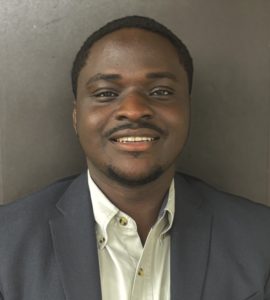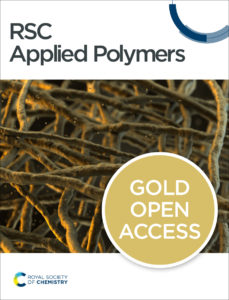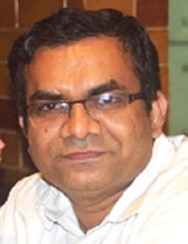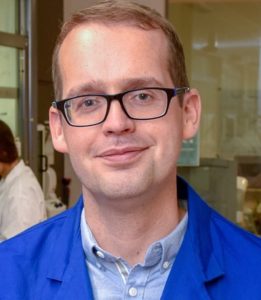To celebrate the growth and development of the RSC Applied Polymers community and to highlight the remarkable authors who continue to contribute their high quality work to the journal we would like to share the opinions and insights of these authors through this introductory blog post. Once dubbed #RSCAppliedfirst50, our blog posts aim to give a voice to the authors behind the research and hope that their insights might shed light upon growing challenges and progress in polymer science and its applications.
In this edition, we hear from Dr. Ali Al Alshaikh about their study ‘Tuning Solvent Strength Can Fractionate PVC into Ultra-low Molecular Weight Material with Low Dispersity’.
An introduction to ‘Tuning Solvent Strength Can Fractionate PVC into Ultra-low Molecular Weight Material with Low Dispersity’ by Dr. Ali Al Alshaikh
In this recently published paper, we explore a solvent-based approach to fractionate poly(vinyl chloride) (PVC) into products with specific molecular weight distributions, which may create new opportunities for chemical recycling. Traditional thermomechanical recycling of PVC waste of mixed and/or unknown composition is highly challenging due to complex formulations and the risk of polymer degradation during processing. In this work, we show that solvent-based fractionation can selectively dissolve specific molecular weight ranges of PVC while removing additives without any apparent degradation.
By adjusting the non-solvent (methanol) content, we fine-tune the solvent strength to control the molecular weight of the recovered PVC fractions. Using fractionation, we managed to produce PVC fractions of ultra-low molecular weight and dispersity. We also showed that this method can successfully recover near-pristine PVC via semi-selective removal of soluble additives in the early fractions (high methanol content).
How does the formation of ultra-low-density materials from PVC change prospects within the field of recycling plastics?
The recovery of ultra-low molecular weight fractions seems to be unique to PVC among other commodity plastics (the others being PET, HDPE, LDPE, PP, and PS) that comprise recycling identification codes (RIC) 1-6. The enhanced solubility of these ultra-low molecular weight fractions can allow PVC to be used in new and unique ways, including chemical modification of PVC, and in 3D printing.
Where do you see your own research going in future?
Because this work has immediate relevance in real recycling applications, we plan to continue to develop and optimize the process of solvent-based fractionation of PVC using green solvents. Highly efficient recovery of solvents will be key to process economics. We also plan to expand our efforts to tackle mixed PVC waste and look for opportunities to directly utilize the additives that are recovered and/or break them down into smaller molecules that can be repurposed.
What aspect of your work are you most excited about at the moment?
The most exciting thing about our work at the moment is the discussion on the recyclability of PVC. Amongst the most common plastics, it is the least recycled. However, this does not mean that it is not recyclable. The reasons behind the lack of recycling are many, and to be fair, a large portion of it goes back to the rarity (by weight) in PVC’s presence in waste currently. Yet, the interest in research in PVC’s recyclability has grown recently, be it via dissolution or chemical means. These works showed that not only is PVC recyclable, but there are many new opportunities for chemistry and materials science when considering the advantageous and unique solubility of the ultra-low molecular weight PVC fractions that can be obtained through our process.
In your opinion, what are the most important questions to be asked/answered in the field of recycling plastics?
There isn’t a one-size-fits-all approach to plastics recycling, so we must think more about ways to make collection and sorting more efficient but also more convenient for end-users to return specific plastics (perhaps with incentives). This could help reduce some of the challenges associated with recycling mixed plastics. Ideally, all plastic materials would bear a “molecular barcode” within their structures that provided information about their identity, additives, and origin so that recycling could be made much more efficient, but that may be more of a wish than a near-term reality.
What do you find most challenging about your research?
Anyone who does research on polymers will tell you that polymers don’t always behave the way you think they will! We encountered more than a few unexpected obstacles on our path to get where we are today with our research in PVC recycling. The most important thing we have found is to always observe, ask questions, and learn!

Ali Alshaikh
Dr. Ali Al Alshaikh is a postdoctoral researcher in the Dept. of Chemical & Biological Engineering at the University of Alabama. His work focuses on polymer chemistry, specifically the upcycling and recycling of plastics, with a particular emphasis on PVC. Ali’s discoveries have shown some of the unique potential of PVC as a versatile material that can be recycled, processed, and modified.

Jaewoo Choi
Jaewoo Choi obtained his Bachelor’s degree from Ulsan National Institute of Science and Technology in 2023 and is currently pursuing a PhD at the University of Alabama. As a second-year graduate student, his research focuses on the post-consumer processing and upcycling of chlorinated plastics.

Feranmi Victor Olowookere
Feranmi Victor Olowookere is a Ph.D. candidate in Chemical Engineering at the University of Alabama, working under the guidance of Dr. Heath Turner. His research focuses on developing computational frameworks (e.g., atomistic and coarse-grained molecular dynamics, and kinetic Monte Carlo methods) for molecular modeling of solvated polymers, such as PVC, and their chemical transformations to advance plastic waste upcycling.

Jason Bara
Dr. Jason Bara is a Professor in the Dept. of Chemical & Biological Engineering at the University of Alabama. He received a B.S. in Chemical Engineering from Virginia Commonwealth University and a Ph.D. in Chemical Engineering from the University of Colorado – Boulder. He has authored more than 170 peer-reviewed research publications on the topics of separations, ionic liquids and green solvents, polymer membranes, and recycling/depolymerization of plastic waste. He has also been awarded 17 U.S. patents for new technologies developed in these areas.
Tuning solvent strength can fractionate PVC into ultra-low molecular weight material with low dispersity
Ali Al Alshaikh, Jaewoo Choi, Feranmi V. Olowookere, Caira McClairen, Owen G. Lubic, Pravin S. Shinde, C. Heath Turner and Jason E. Bara
RSC Appl. Polym., 2025, Advance Article
 |
RSC Applied Polymers is a leading international journal for the application of polymers, including experimental and computational studies on both natural and synthetic systems. In this journal, you can discover cross-disciplinary scientific research that leverages polymeric materials in a range of applications. This includes high impact advances made possible with polymers across materials, biology, energy applications and beyond.
|























